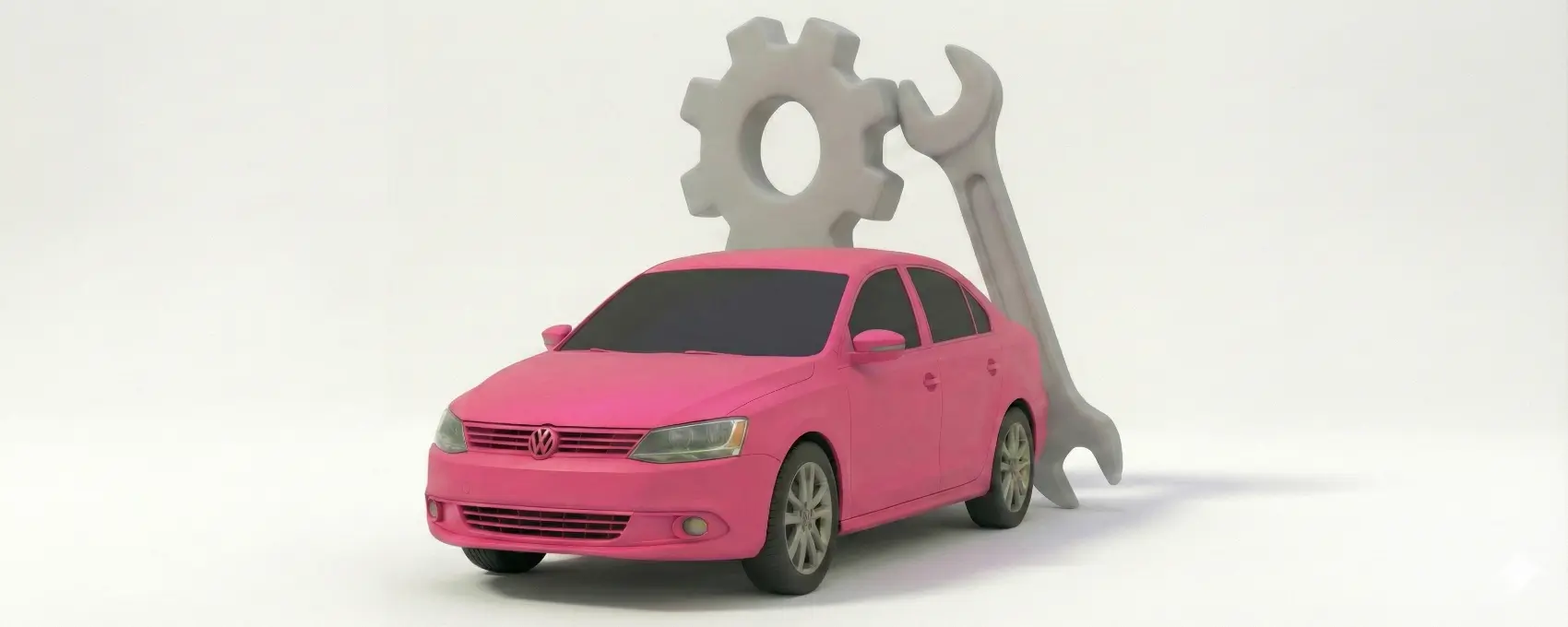Ultimately, Volkswagens are a known and reliable brand, but no car is perfect. Jerry customers are staying aware of common issues facing Volkswagens to get ahead of potential repairs.
Top Volkswagen issues: water pump/thermostat leaks, early 2.0T timing chain wear, intake‑valve carbon buildup, DSG mechatronics/shift faults, and ignition coil or PCV misfires. This view reflects what we’re seeing after helping 450,000 drivers across the U.S. manage repairs and maintenance, combined with current shop-quote and repair-price data matched to year, mileage, ZIP, and shop type. Most concerns are fixable without drama when addressed early. Many parts have updated revisions; the key is accurate diagnosis and choosing a shop experienced with VWs.
If you want local ranges for your car, enter your year/trim and ZIP in Jerry.
Real customers Jerry helped
While pricing can vary based on different factors like location, parts used, and exact vehicle, Jerry uses real customer experiences to show what drivers are paying right now. Here are some examples of customers we’ve helped find their repairs at the right price.
Estimates are modeled based on real vehicle and location data; names have been changed. Actual prices will vary by shop, parts, and vehicle condition.
Model-year & trim cheat sheet
Quick checks for the top issues above
Jerry customers are performing quick checks to identify issues from above:
- Coolant smell, low coolant, or pink crust near the passenger side of the engine: On a cold engine, check the reservoir level and look for pink crust below the pump/thermostat area and along the lower splash shield.
- Rattle for 1–3 seconds at cold start, cam/crank correlation codes, or inconsistent idle: Listen at first start after an overnight park for a brief metallic rattle from the timing cover side.
- Rough idle and misfire under load with Check Engine Light: From a cold start, feel for a shaking idle and note any fuel smell; inspect around coil packs for oil or cracked boots.
- Hesitation at light throttle, rough cold starts, and mpg drop on a direct‑injection engine: After sitting overnight, note choppy idle and sluggish response for the first minute; check for whistling from the PCV area.
- Jerky takeoff, PRNDS flashing, or limp mode in warm traffic: With ignition on, verify no transmission warning lights; review records for DSG service within 40k miles. Test drive only if safe.
Verify in Diagnose in the Jerry app if anything seems off.
Maintenance that reduces risk for these issues
Jerry customers are finding that these habits address coolant leaks, timing wear, carbon buildup, coil failures, and DSG behavior—keeping repairs smaller and less frequent.
- Oil and filter every 5,000–7,500 miles with VW 502 00/504 00 spec oil; clean oil helps chains, tensioners, and turbo bearings last.
- Coolant service every 5 years/100,000 miles with VW‑approved G12/G13; keeps seals and pump housings healthier and reduces hot‑spot leaks. Use only VW specifically approved coolant to prevent congealing from incompatible coolant types.
- Spark plugs every 40,000–60,000 miles; replace coils proactively if misfires start to prevent cat damage.
- Brake fluid every 2 years; protects internal brake parts from corrosion and limits moisture to keep brake fluid from boiling and affecting brake pedal feel.
- Be sure the gas cap is tight (tighten until it clicks) when refueling to avoid the Check Engine Light coming on. The emission control system will fail the early fuel evaporation test (EFE) because the system isn’t sealed if the gas cap is off or installed incorrectly.
If history’s unknown, catch up at 60k/100k checkpoints. Combine jobs with labor overlap (e.g., pump with timing service) to save money. Documented maintenance can merit a small premium when selling.

When to stop driving (to avoid bigger bills)
If you’re unsure whether it’s safe, pull over and call a mechanic or tow; new warning lights, severe new noises or smells, or fluids pouring out are all “stop now” signals. Here are common situations where Jerry customers are stopping immediately and is the right move:
- Temperature warning or overheating, steam from the hood, or rapid coolant loss.
- Flashing Check Engine Light with power loss or heavy misfire.
- Brake warning light on, spongy pedal, or grinding that worsens quickly.
- Oil‑pressure light, loud ticking/knocking, or visible oil dumping.
If you’re using the Jerry app, you can run a quick triage in Diagnose before you tow, then compare local price ranges for the likely repair.
What our customers are asking us
-
My oil level drops between changes—should I use a thicker oil?
-
Will an EVAP code make me fail emissions?
-
Am I overpaying for a VW water pump/thermostat job?
-
OEM vs aftermarket for coils, pumps, and PCV—what’s worth it?
-
How often should I service my DSG, and what should it cost?

Steve Kaleff began working on cars at the very young age of nine years old, when his dad actually let him make fixes on the family car. Fast forward to the beginning of a professional career working at independent repair shops and then transitioning to new car dealerships. His experience was with Mercedes-Benz, where Steve was a technician for ten years, four of those years solving problems that no one could or wanted to fix. He moved up to shop foreman and then service manager for 15 years. There have been tremendous changes in automotive technology since Steve started his professional career, so here’s looking forward to an electric future!

Nick Wilson is an editor, writer, and instructor across various subjects. His past experience includes writing and editorial projects in technical, popular, and academic settings, and he has taught humanities courses to countless students in the college classroom. In his free time, he pursues academic research, works on his own writing projects, and enjoys the ordered chaos of life with his wife and kids.









